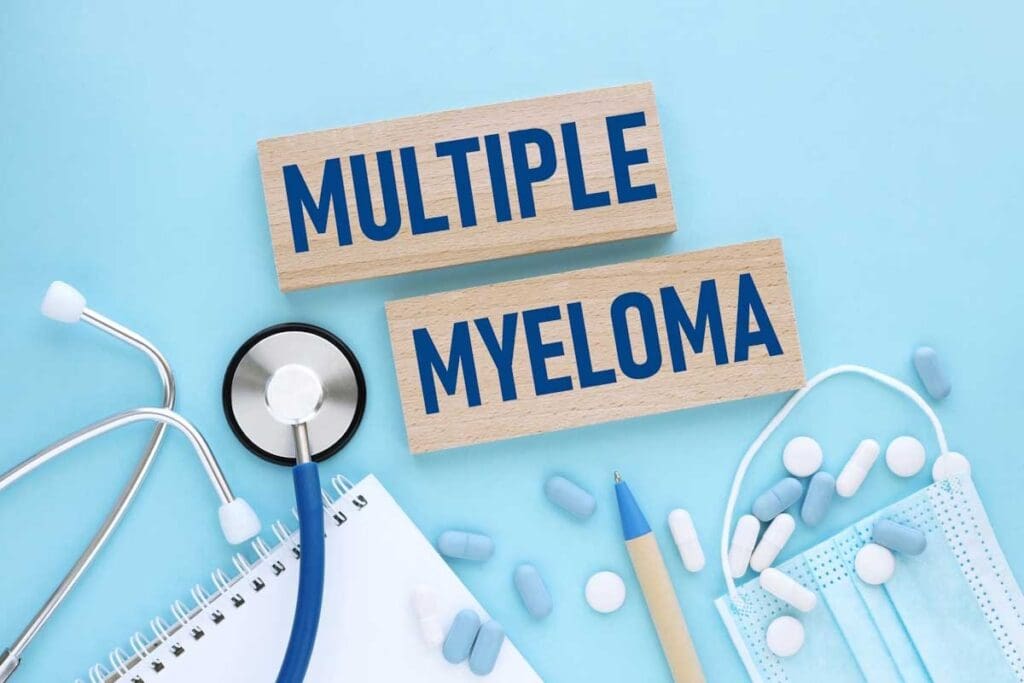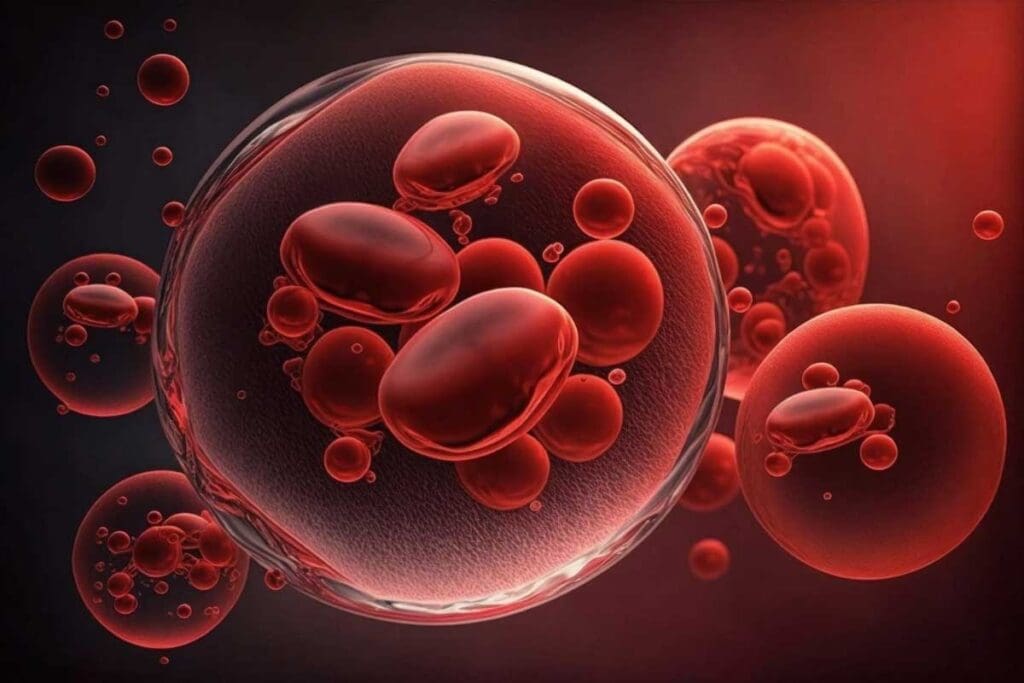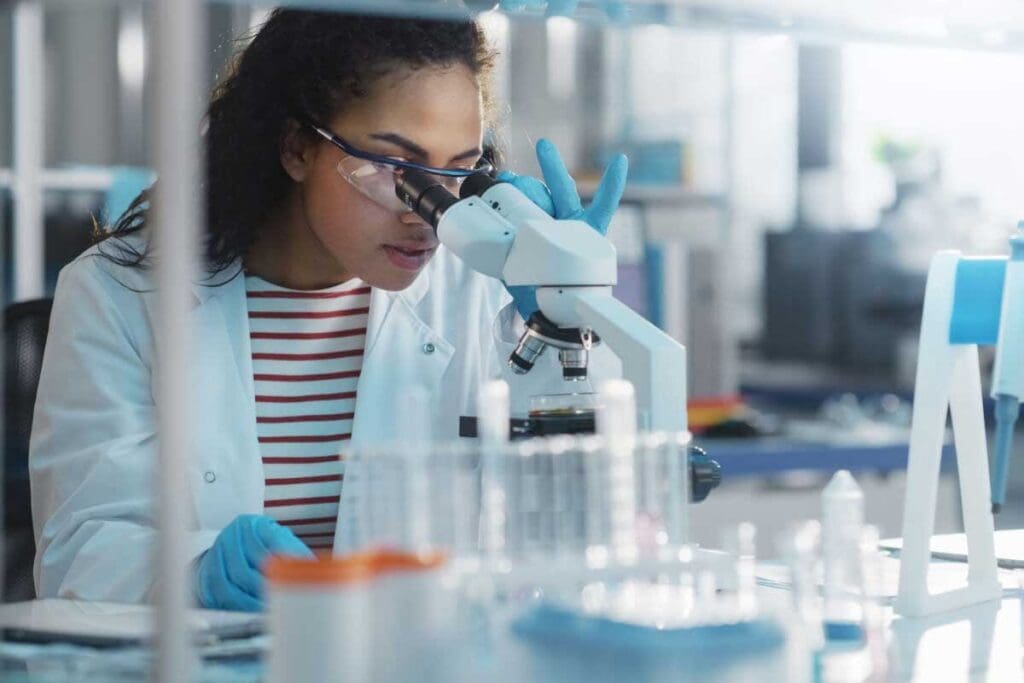Last Updated on November 17, 2025 by Ugurkan Demir

For those with multiple myeloma, bmt for multiple myeloma is a key treatment that can significantly change the course of the disease. At Liv Hospital, we use the latest methods in bone marrow transplant therapy to ensure patients receive the best care possible. Bone marrow transplant, especially autologous stem cell transplant, has been shown to improve progression-free survival and overall survival rates. It helps by replacing diseased marrow with healthy stem cells, enabling the body to produce normal blood cells and fight the cancer effectively. Our comprehensive approach supports patients through this complex process for optimal outcomes.
We explain the BMT process. It includes stem cell collection, high-dose chemotherapy, and reinfusion. This offers hope for better and longer-lasting remissions. Autologous stem cell transplant (ASCT) is a main treatment for many patients.

It’s important for patients and doctors to know about multiple myeloma and its treatments. This cancer makes the bone marrow produce bad plasma cells.
Multiple myeloma harms the plasma cells in the bone marrow. These bad cells fill the bone marrow, pushing out good cells. This can cause anemia, bone pain, and make infections more likely.
Key aspects of multiple myeloma include:
There are many treatments for multiple myeloma today. These include:
Doctors often mix these treatments to get the best results.
Bone Marrow Transplantation (BMT) is a key treatment for some patients with multiple myeloma. It replaces bad bone marrow with healthy stem cells, either from the patient or a donor.
“BMT offers a potentially curative approach for multiple myeloma by allowing for high-dose chemotherapy followed by the reinfusion of stem cells to restore the bone marrow.”
Choosing BMT depends on the patient’s health, how far the disease has spread, and past treatments.

BMT is a treatment for multiple myeloma. It replaces damaged bone marrow with healthy stem cells. This can come from the patient or a donor. It’s a key treatment for eligible patients, aiming for a cure.
There are two main types of BMT for multiple myeloma: autologous stem cell transplant (ASCT) and allogeneic stem cell transplant. ASCT uses the patient’s own stem cells. An allogeneic transplant uses stem cells from a donor.
ASCT is more common for multiple myeloma. It’s chosen because it has fewer risks than allogeneic transplants.
ASCT is the standard treatment for eligible multiple myeloma patients. It uses high-dose chemotherapy and then the patient’s stem cells are reinfused.
ASCT can lead to deep remissions. It also has fewer risks compared to allogeneic transplants.
For ASCT, stem cells can come from peripheral blood or bone marrow. Peripheral blood stem cells are preferred. They are easier to collect and engraft faster.
| Characteristics | Peripheral Blood Stem Cells | Bone Marrow |
| Collection Method | Apheresis after mobilization | Surgical harvest from bone |
| Engraftment Time | Faster (usually within 2 weeks) | Slower (can take 3-4 weeks) |
| Complications | Fewer complications | More invasive, higher risk |
In conclusion, BMT, mainly ASCT with peripheral blood stem cells, has changed multiple myeloma treatment. Knowing about BMT is key for patients and doctors to make good choices.
Checking if someone is right for BMT is key in fighting multiple myeloma. We look at many things to see if a patient can get this treatment.
Age and how well someone can function are big parts of deciding if they can get a multiple myeloma transplant. Age matters, but it’s not everything. We also look at a patient’s health and if they can handle the transplant.
Usually, people under 65 are seen as better candidates for BMT. But, we also check their performance status. This is how well they can do physical things. A higher score means they’re in better shape and less likely to have problems.
The state of a patient’s multiple myeloma is very important. We look at how far the disease has spread and how it’s reacted to treatments. This helps us decide if they’re a good fit for stem cell therapy myeloma.
Those with disease that’s not getting worse or is stable are usually better candidates. We use tests like bone marrow biopsies and scans to check the disease’s status.
We do a detailed check-up before transplant to see if someone is ready for stem cell transplants for myeloma. This includes lots of tests to see how healthy they are and how their disease is doing.
These checks help us find any risks and plan how to deal with them. This way, we can make sure the patient gets the best care possible.
Before BMT, patients with multiple myeloma get induction therapy to lower their tumor count. This first step is key to getting ready for what comes next.
The main goal of induction therapy is to cut down on cancer cells. This makes the patient’s condition better and boosts the chance of a good BMT. It aims to get the disease under control so the patient can handle the strong chemo that comes next.
Induction therapy helps us see how well the treatment works. It also helps decide the best next steps. This phase gives us clues about how the disease reacts to certain treatments.
Induction treatments for multiple myeloma vary. They often mix corticosteroids, proteasome inhibitors, immunomodulatory drugs, and chemo. The right mix depends on the patient’s health, disease, and BMT readiness.
Some common treatments include:
These treatments have been shown to work well for many patients.
After induction therapy, patients get checked to see how they’ve responded. This includes:
| Evaluation Method | Purpose |
| Bone Marrow Biopsy | To check the bone marrow’s plasma cell count |
| Blood Tests | To measure M-protein and other markers |
| Imaging Studies | To look for bone lesions or disease outside the bone marrow |
These checks help us decide if the patient is ready for BMT. They also guide any needed changes to the treatment plan.
With careful planning and execution of induction therapy, we can increase the patient’s chances of a successful BMT. This improves their overall outcome.
Stem cell mobilization is key for collecting healthy stem cells for transplant in multiple myeloma patients. It’s essential for a successful bone marrow transplant (BMT).
To start collecting stem cells, the body must release them from the bone marrow into the blood. This is done by giving growth factors. These factors help produce and release stem cells.
Granulocyte-Colony Stimulating Factor (G-CSF) is a common growth factor used. It’s given as an injection. G-CSF makes the bone marrow release stem cells into the blood.
Chemotherapy might also be used with G-CSF for better results. This combo is very effective for multiple myeloma patients.
It’s important to check stem cell counts in the blood during mobilization. This is done with daily blood tests. When the count is high enough, it’s time to start collecting stem cells.
The right time for collection is key. It ensures the healthiest stem cells are collected for the transplant.
Healthcare providers manage the mobilization process carefully. This helps increase the chances of a successful BMT for multiple myeloma patients.
The process of stem cell harvesting via apheresis is key for patients with multiple myeloma. Apheresis collects stem cells from the blood. These cells are then frozen for use in the transplant.
Apheresis has several steps to collect stem cells safely and effectively. First, we access the patient’s blood, usually through an arm vein or central line. The blood is then drawn into an apheresis machine.
This machine separates the stem cells from other blood parts. The stem cells are kept, and the rest of the blood is returned to the patient. The whole process can take hours, with the patient being watched for any bad reactions.
Key aspects of the apheresis procedure include:
An apheresis session can last from 2 to 4 hours. How often sessions happen depends on the needed stem cell count and the patient’s health.
At times, more than one session is needed to get enough stem cells. We keep an eye on the patient’s stem cell count to see if more collections are needed.
After collecting stem cells, they are cleaned and then frozen. Freezing them at very low temperatures keeps them alive for the transplant.
The frozen stem cells are stored until transplant time. On transplant day, they are thawed and given back to the patient.
Knowing about apheresis helps patients prepare for this important part of their treatment. Our team works hard to make sure every step is done with care and skill.
The conditioning regimen is a key step before BMT for multiple myeloma. It uses high-dose chemotherapy to kill cancer cells and get the body ready for the transplant.
High-dose melphalan is a main chemotherapy drug for multiple myeloma patients. Its main job is to kill the cancerous plasma cells in the bone marrow. This makes room for healthy stem cells to be transplanted. Melphalan is picked because it’s good at killing myeloma cells and weakens the immune system to prevent graft rejection.
High-dose melphalan is given through an IV. The dose is based on the patient’s body size. It’s given 1-2 days before the stem cell reinfusion. This lets the chemotherapy work and kill myeloma cells before the new stem cells are added.
We watch how the patient reacts to the treatment. We adjust the timing and dose as needed to get the best results.
High-dose chemotherapy can cause side effects like nausea, fatigue, and mucositis. We use different ways to help manage these, like anti-nausea meds, nutrition support, and pain control.
| Side Effect | Management Strategy |
| Nausea | Anti-nausea medications |
| Mucositis | Pain management, oral care protocols |
| Fatigue | Nutritional support, rest |
Understanding the role of high-dose chemotherapy in BMT and managing its side effects helps improve patient outcomes. It also makes their life better during and after treatment.
Stem cell reinfusion is a key step in the bone marrow transplant process. It gives hope to multiple myeloma patients. After high-dose chemotherapy, the stem cells help the bone marrow work again.
On transplant day, patients get ready for the procedure. It’s quick and simple. We make sure the stem cells are healthy and ready to go.
The process is like a blood transfusion. The stem cells are thawed and put back into the patient’s blood. This usually takes 30 minutes to an hour.
During the reinfusion, we watch the patient’s vital signs. This ensures their safety and comfort. The procedure includes:
After the reinfusion, we keep a close eye on the patient. The first few days are very important. Our team is ready to handle any side effects.
Post-transplant care includes checking blood counts and fighting infections. We also make sure the patient gets enough to eat. Here’s what we do:
| Day Post-Transplant | Monitoring Focus | Care Considerations |
| 0-7 | Blood count recovery, infection surveillance | Isolation precautions, antimicrobial prophylaxis |
| 7-14 | Engraftment monitoring, GVHD surveillance | Immunosuppressive medication management |
| 14+ | Immune recovery, complication management | Nutritional support, follow-up appointments |
The stem cell reinfusion day is the start of the recovery journey. Our team is dedicated to giving full care and support during this important time.
The journey doesn’t end with the stem cell reinfusion. Recovery after BMT for multiple myeloma is a big part of the process. Knowing what to expect can help a lot during this time.
Monitoring blood count recovery is key after BMT. Blood counts like white blood cells, red blood cells, and platelets, start to get better in a few weeks. But how long it takes can differ for each person.
Regular blood tests are vital during this time. They help keep an eye on these counts and adjust treatments as needed.
BMT can be a good treatment for multiple myeloma, but it comes with risks. Common problems include infections, graft-versus-host disease (GVHD), and organ damage. It’s important to manage these issues well for a good recovery.
Infection prevention is a top priority during recovery. Patients often get prophylactic antibiotics and learn how to avoid infections.
The time spent in the hospital after BMT varies. Patients usually go home when they’re stable and ready for home care. Before leaving, they learn about post-transplant care, including managing medications and watching for complications.
Recovery after BMT for multiple myeloma needs a full plan. This includes medical care and support for the patient’s overall health. By knowing what to expect, patients can better handle this tough time.
Tandem transplants are a strong treatment for multiple myeloma, mainly for those with high-risk disease. This method involves two autologous stem cell transplants. The goal is to get a deeper response and possibly better long-term results.
A tandem transplant means two autologous stem cell transplants done one after the other. The first transplant is followed by a recovery time. Then, the second transplant happens. This method uses higher doses of chemotherapy, supported by stem cell rescue, to fight myeloma more effectively.
Not every patient with multiple myeloma can have tandem transplants. This method is usually for those with high-risk features, like certain genetic changes or poor response to first treatment. The choice to do a tandem transplant depends on the patient’s health, disease, and how they’ve responded to treatment before.
Key factors influencing the decision include:
Tandem transplants take longer than single transplants because they involve two rounds of high-dose chemotherapy and stem cell rescue. The process starts with stem cell mobilization and collection, followed by the first transplant. After recovery, the second transplant is done. The whole process can last several months, with close monitoring of the patient’s disease and health.
It’s vital for patients getting tandem transplants to have a team of experts, like hematologists, nurses, and other healthcare professionals. They help manage the treatment’s complexities and any complications that might come up.
Understanding tandem transplants helps patients and their caregivers make informed decisions about their treatment for multiple myeloma.
Bone Marrow Transplant (BMT) is a key treatment for multiple myeloma. It offers a chance for significant remission. Even though BMT isn’t a cure, it’s now a standard treatment for many patients. This gives them a better chance at survival and a better life.
After BMT, patients need to watch their health closely. They will slowly get their blood counts and immune system back. Knowing what to expect after life after bmt helps patients deal with their journey better.
Thanks to new treatments, like stem cell transplants, survival rates for multiple myeloma have gone up. Care after transplant is all about the patient’s needs. It aims to manage any problems and keep the patient healthy.
Medical research keeps moving forward, and we’re dedicated to the best care for BMT patients with multiple myeloma. We want to help patients through every part of their treatment. This includes getting ready, going through the transplant, and recovering afterwards.
ASCT is a key treatment for Multiple Myeloma. It uses high-dose chemotherapy followed by the patient’s own stem cells. This can lead to a cure or long-term control of the disease.
To decide if a patient is a good candidate for BMT, doctors look at age, health, disease status, and how well the patient can function. A detailed check-up is done to see if the patient can handle the transplant.
Induction therapy is the first treatment to reduce tumors and prepare for BMT. It combines chemotherapy and other drugs. The goal is to get a good response before transplant.
To get stem cells, growth factors (G-CSF) are used with or without chemotherapy. Then, apheresis separates stem cells from blood. These cells are processed and frozen for later use.
High-dose chemotherapy, like melphalan, kills myeloma cells in the bone marrow. This makes room for the stem cells to grow and produce healthy blood cells.
On the day of the transplant, thawed stem cells are given back to the patient. This is a quick and painless process. Then, the patient is closely watched for any immediate reactions.
Recovery involves watching blood counts and managing any complications. This includes infections or graft failure. The patient is planned for discharge based on their recovery.
Tandem transplants are two autologous stem cell transplants in a row. They are for patients with high-risk disease or those not responding well after the first transplant. It aims to better control the disease.
After BMT, patients need ongoing care to watch for disease return and manage late effects. This helps achieve long-term survival and improve quality of life.
Autologous transplant uses the patient’s own stem cells. An allogeneic transplant uses a donor’s stem cells. Each has different uses, benefits, and risks in treating Multiple Myeloma.
A second BMT for Multiple Myeloma depends on several factors. These include time after the first transplant, health, and disease response to treatment. Each case is assessed individually.
Stem cell therapy, like ASCT, is vital in treating Multiple Myeloma. It allows for high-dose chemotherapy and helps replace the bone marrow with healthy stem cells.
Subscribe to our e-newsletter to stay informed about the latest innovations in the world of health and exclusive offers!